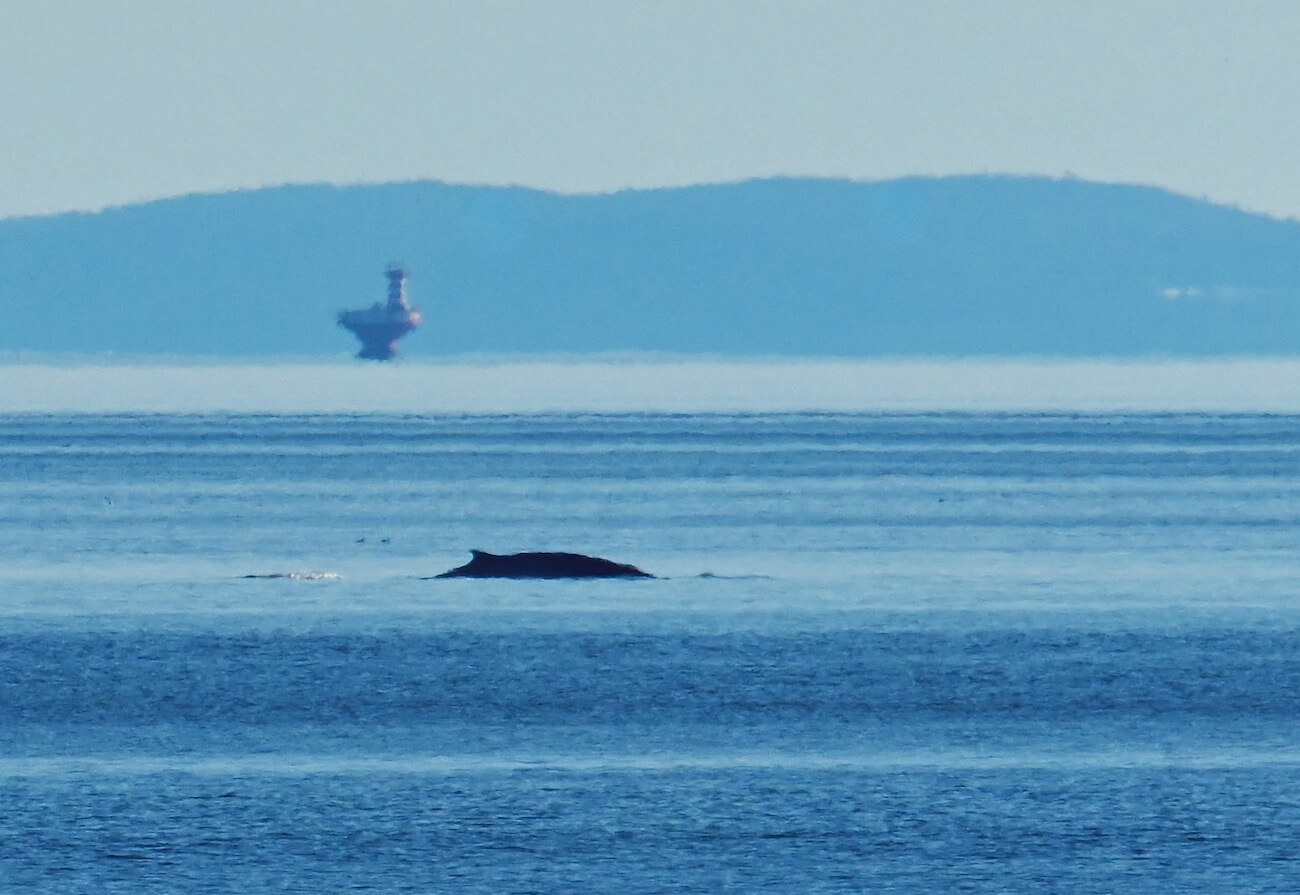Two fin whales, good numbers of belugas, several minke whales, a humpback… The tally of cetaceans observed in the waters between Tadoussac and Les Escoumins continues to grow. These giants have not abandoned Franquelin, however, where observers were able to admire the large blasts of a blue whale, one fin and four humpbacks, or even Gaspé Bay, where one resident was able to spot her first whales of the year. Spring is off to a strong start!
Research season kicks off
With sunny days and mild weather, marine mammal research on the St. Lawrence is starting up again. A research technician from the Group for Research and Education on Marine Mammals (GREMM) accompanied a Fisheries and Oceans Canada boat last week, which gave rise to numerous observations. A few minke whales were roaming offshore. The technician describes the day he spent on the water: “In terms of weather, spring resembles autumn, as it’s rather unstable. Yesterday was a gorgeous day, and we saw several belugas. We didn’t have the big herds like we sometimes see in the fall, but there were quite a few nevertheless.”
Grey seals and harbour seals were also spotted in the area around the tidal flats known as Batture aux Alouettes as well as near Île Verte. Clusters of belugas were swimming near Île Verte while the research team came across a solitary individual near Île Rouge. Large whales made their appearances in the middle of the afternoon: “Two fin whales off the dunes, another large whale halfway between Prince Shoal Lighthouse and Île Rouge, and another gang of belugas not far from the two fins.”
Whales under the sun
For one observer, last Sunday was the ideal opportunity to travel to Cap de Bon-Désir, a renowned whale-watching site. And the marine mammals did not disappoint, as she was lucky enough to see a minke whale, a few harbour seals and a solitary grey seal. The cherry on the cake was that one humpback even ventured into the Saguenay Fjord! Passengers and crew members of the Tadoussac–Baie-Sainte-Catherine ferry reportedly saw the animal heading upstream.
In Gaspésie, one local resident was delighted by the sighting of her first large whale of the year. “My first humpback whale in Gaspé Bay near Grande-Grave in Forillon National Park! Back, tail and spout.” On the other hand, the seals that had settled in front of her home have left the area at the same time as the ice they were resting on.
A few belugas have also been spotted in the Gaspé Peninsula. Although their presence here may appear surprising – after all, the species is rarely sighted in these waters – there is no cause for alarm. In spring, belugas quietly return to the estuary. Their summer range lies between Île aux Coudres, Forestville (Haute-Côte-Nord region) and Île du Bic (South Shore) and includes the Saguenay Fjord. Remember that if you observe a vulnerable marine mammal, you should contact the Quebec Marine Mammal Emergency Response Network (QMMERN).
Continuing abundance in Franquelin
“I observed four that day: there was a blue whale, a fin whale and four humpbacks.” Large spouts betraying the presence of large whales blur the horizon off the coast of Franquelin. When observing humpbacks, one might wonder where they spent the winter. To reproduce, the majority of the population migrates to the Caribbean. Some individuals remain in northern waters where they continue to feed throughout the colder months. Did the individuals observed in the St. Lawrence travel the 5,500 kilometres from the Caribbean that fast, or had they always been in the area? In any case, it’s a pleasure to see so many whales again this spring!
Thanks to all our collaborators!
Special thanks go out to all our observers who share their love for marine mammals with us! Your encounters with cetaceans and pinnipeds are always a pleasure to read and discover.
On the water or from shore, it is your eyes that give life to this column.
Odélie Brouillette
Patrice Corbeil
Laetitia Desbordes
Diane Ostiguy
Mathieu Marzelière
Renaud Pintiaux
Pascal Pitre
Andréanne Sylvain
Marielle Vanasse
Et à tous les autres!
Merci aussi aux équipes qui partagent leurs observations :
Station de recherche des Îles Mingan (MICS)
Réseau d’observation des mammifères marins (ROMM)
Réseau québécois d’urgence pour les mammifères marins (RQUMM)
Groupe de recherche et d’éducation sur les mammifères marins (GREMM)
And all those we left out!
Additionally, we would like to acknowledge the following teams that also share their sightings:
Mingan Island Cetacean Study (MICS)
Marine Mammal Observation Network (ROMM)
Quebec Marine Mammal Emergency Response Network (QMMERN)
Group for Research and Education on Marine Mammals (GREMM)
Would you also like to share your observations?
Have you seen any marine mammals in the St. Lawrence? Whether it’s a spout offshore or just a couple of seals, drop us a line and send your photos to [email protected]!







